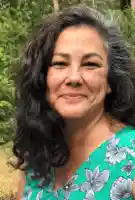Summer as a Season of Alignment

A Purposeful Pause: Summer as a Season of Alignment
Not every early childhood program slows down in the summer. Some stay open year-round, serving families without skipping a beat. Others shift into a different rhythm, offering modified schedules, shorter days, or a more relaxed pace. And some close entirely, using the summer months to regroup before a fresh start in the fall.
Regardless of your model, summer can be an opportunity to invite a different kind of attention; a time to allow space for noticing, realigning, and imagining what’s next. For early childhood leaders, this season can be more than a breather. It can be a strategic pause that helps shape the year ahead.
Start with the Big Picture
To get started, consider the frameworks and tools that already shape your program’s vision. You might already have reference points on hand to help guide the process. Start with resources that reflect your core values and educational approach. This could include the NAEYC Program Standards, CLASS or ERS assessments, your state’s QRIS rubric, or even the foundational principles of your curriculum or philosophy. These guides are most useful when we shift from a “compliance” lens and instead use them to ask reflective questions and guide curiosity. How can each tool be a compass to help chart the path ahead? Can these resources help highlight where your program is thriving and where it needs nourishment?
Some prompts to guide your review:
-
Are learning environments rich, accessible, and inclusive?
-
Are educators supported with ongoing feedback and professional development?
-
Do children feel safe, engaged, and known by the adults around them?
-
How are families engaged, informed, and welcomed?
If you’re not sure, try using a self-assessment format or an informal overview. And here's the thing: it doesn’t all have to be formal. Sometimes, a simple “walk and talk” with your lead teachers or a whiteboard session with your admin team can bring to light insights that are easy to miss when you are moving quickly. Becker’s Space & Systems Review for Early Childhood Leaders might be a helpful resource.
Leadership Is Environment Work
In our field, we sometimes talk about the environment as the “third teacher.” But step back far enough, and you’ll see something else: your environment is a mirror of your leadership.
Walk through your program at the end of the day, when the children have gone home and the spaces are quiet. Look at the classroom corners, the shared bulletin boards, the shelves in the staff area. What do you notice? You might see baskets labeled with care, a calming nook created after a team conversation, or a family photo wall that hasn’t been updated since fall. You might spot materials no one is using anymore, or a routine that everyone follows even though it no longer works.
These details can help illustrate what your team has prioritized, what has been sustained, and what may have been set aside. In that sense, your environment holds a record of your leadership: your choices, your capacity, and the systems that support (or strain) the experience of children and adults every day.
Summer is a rare chance to audit that environment, both the physical and the invisible parts. What is helping us do our best work right now? What is getting in the way? And what has stayed the same, not because it works, but because we haven’t had time to change it? During this shift in energy and perspective, we can more clearly see what’s aligned and what’s simply accumulated.
Bring Educators Into the Conversation
Reflection shouldn’t live in the director’s office alone. If educators aren’t part of the conversation, you’re missing the heart of the story. Teachers are on the ground, moving through the rhythm of the day, responding to children in real time, and connecting to the pulse of what's working and what’s not. Their voices and insights are essential.
Prioritize time to connect with teachers directly. A short staff meeting or a planning block is often enough. This time can be structured as one-on-one check-ins or group conversations. Both formats have value and bring their own unique energy. If your calendar allows, consider making space for each. With clear framing, the conversation can stay grounded in shared purpose and avoid drifting into venting without direction. Sticky notes, sentence stems, or a “rose-thorn-bud” format can make it easier for staff to respond.
You might hear patterns you’ve already noticed. You might also learn something new. Either way, what you gather can help shape priorities and bring focus to what matters most across your team. But don’t forget the follow through! When educators take the time to share honestly, it’s your responsibility to close the loop. Let your team know how their insight is informing planning, decision-making, or strategy. Even if you can’t act on every idea, naming what you’ve heard and how it’s being considered goes a long way in building trust.
Make the Data Make Sense
Information flows through most early childhood programs every day, but insight takes intention. We often collect more data than we realize: developmental assessments, CLASS feedback, family surveys, staff reflections, and exit interviews. The challenge is rarely in gathering these metrics. It’s in making it meaningful. We have to remember to ask, “What are we learning from this information, and how is it guiding our next steps?”
That said, don’t let yourself get overwhelmed. You don’t need to analyze everything at once. Choose one or two sources that connect to your current goals and start there. A few places to look:
-
Child outcomes across classrooms or age groups. Are there patterns or gaps? What strategies might support more equitable learning?
-
Family feedback. Are caregivers feeling connected to the program? Do your communication systems reach them clearly and consistently?
-
Staff morale. Do educators feel heard? Are they growing? What supports have made a difference?
Sometimes the most useful insight doesn’t come from a single data set. It comes from what emerges when you look across them. For example, child data might look strong. But if family engagement scores are low, that may point to a disconnect in how progress is shared or understood.
Collecting data is only the first step. What matters is how you use it to inform decisions, align priorities, and move forward with clarity and purpose. Resources like the ELOF Implementation Toolkit can help you connect data to developmental goals. The NAEYC Professional Standards and Competencies offer another lens for reviewing how you support and grow your team.
Celebrate What’s Working
Before shifting into planning mode, take time to recognize what is going well. This isn’t about adding one more thing to your to-do list. When we make space for appreciation, we anchor our team in shared purpose. Noticing progress reminds everyone that growth is happening, even in small ways.
Recognition means more when it reflects what is actually unfolding in daily practice. Be specific. Be sincere. Examples might include:
-
An infant classroom has settled into a consistent nap routine that supports everyone’s well-being.
-
A team worked together to redesign the dramatic play area with materials that reflect the home cultures of children in the program.
-
Enrollment held steady during a season of transition, thanks to the coordinated efforts of staff and leadership.
Post “small wins” on a shared bulletin board or write handwritten notes. Don't get too caught up in the format; what’s important is that staff feel seen and valued. Consistent, thoughtful recognition strengthens morale and supports a culture of respect and care.
Use a Structured Review to Ground Your Next Steps
Once you’ve taken time to reflect, it’s helpful to ground your observations in a structured format. A resource like the Summer Space and Systems Review can support this process by organizing attention across key areas of your program.
This includes:
-
Welcoming and belonging
-
Classroom learning environments
-
Outdoor spaces
-
Adult workspaces
-
Storage and organization
-
Daily routines and transitions
-
Communication and documentation
-
Team wellness and program culture
You can use this tool independently, with a teaching partner, or as part of a larger team conversation. The goal is to notice patterns, surface areas that need attention, and identify small changes that can help strengthen alignment in the months ahead.
Planning Forward with Focus
Once you’ve taken stock of what’s working and where there’s room for improvement, it’s time to plan forward. Start by identifying two or three priorities that reflect your current needs and capacity. Keep it focused. Keep it doable.
Here are a few examples of clear and actionable areas of focus:
-
Strengthening support for dual language learners
-
Using child assessment data more intentionally to guide instruction
-
Redesigning onboarding to include more modeling, observation, and coaching
You’re not required to map the entire year. A draft is enough. Sharing your early thinking, however informal, can help your team feel grounded and engaged in the direction ahead. You’re also likely to elicit helpful feedback and identify strengths and resources you might not have been aware of.
Summer doesn’t always offer extra time, but it can offer a different kind of attention. You don’t need every answer to move forward. Start by making time for honest questions and listening closely to what rises in response. Give yourself a pat on the back for being willing to be reflective. This kind of leadership takes intention, persistence, and no small amount of heart. The care you bring to this work shows up in the everyday experience of your staff, your children, and their families.
Strong programs take shape through steady reflection, small adjustments, and shared effort over time. Let this season be a moment to pause with purpose, reconnect with your vision, and take a few thoughtful steps toward the year ahead.
Resources
DOWNLOAD: Becker’s Space & Systems Review for Early Childhood Leaders
Early Learning Outcomes Framework Implementation Toolkit
The McCormick Center for Early Childhood Leadership: Resource Library
The Build Initiative: Leadership Resources

Christine Murray is an Early Childhood Education Specialist with Becker’s Education Team.
As an educator, coach and leader, Christine is inspired by the curiosity, joy and wonder that children so generously model for us. She earned her M.A. in Innovative Early Childhood Education at the University of Colorado Denver and loves collaborating with and supporting others in the field. Grounded in relationships and guided by empathy, Christine is always learning, connecting and creating.
